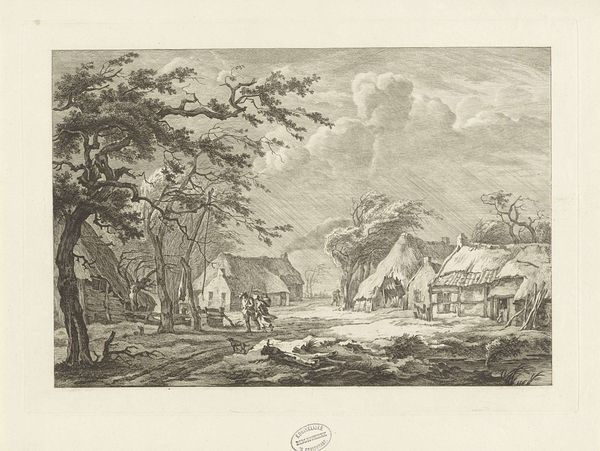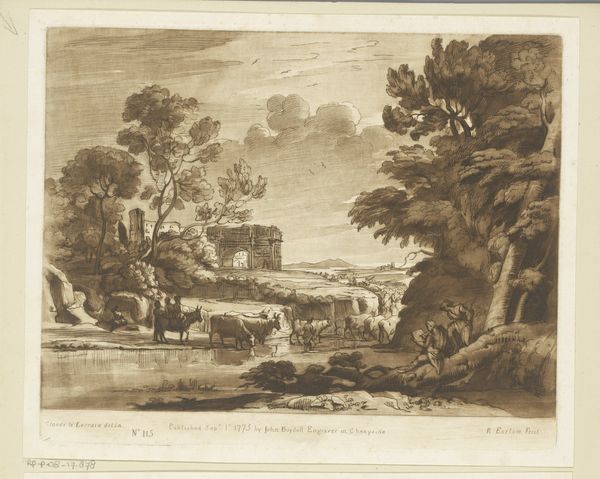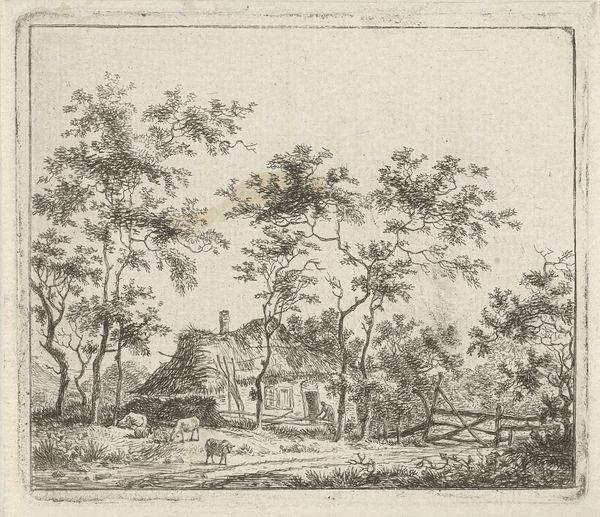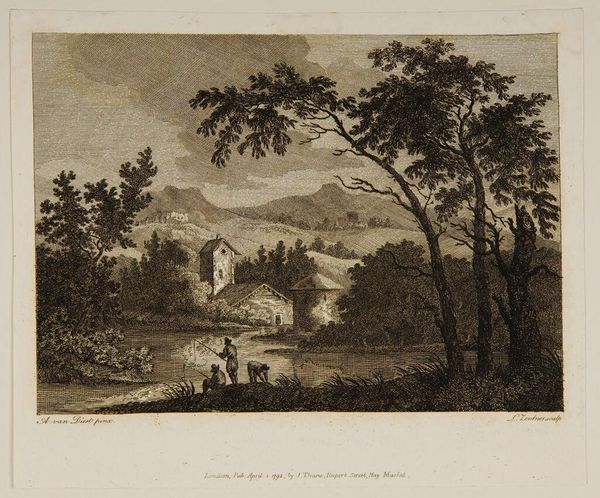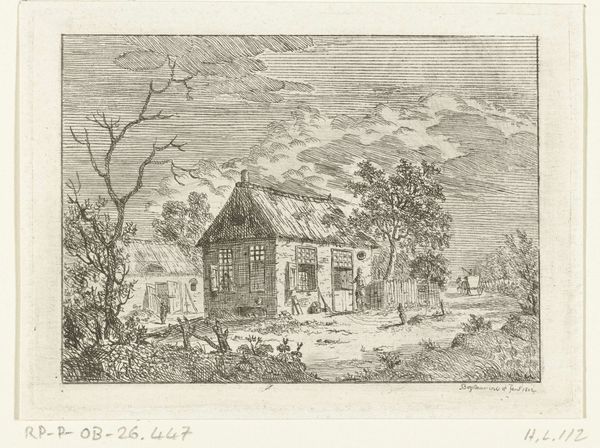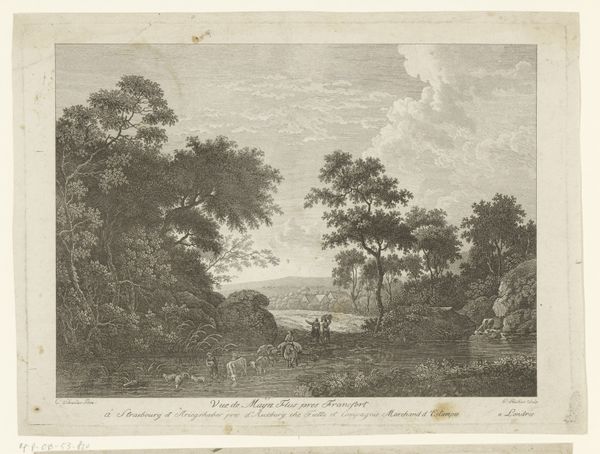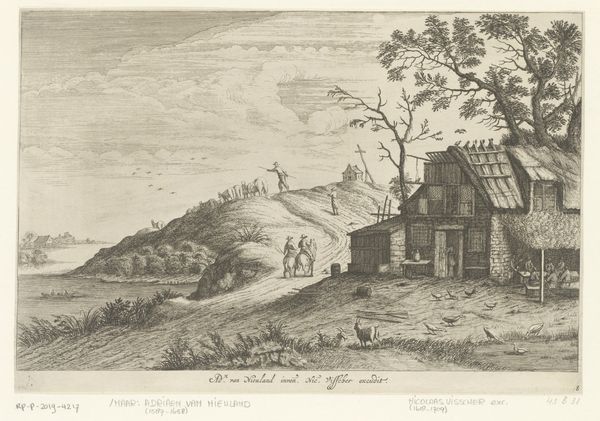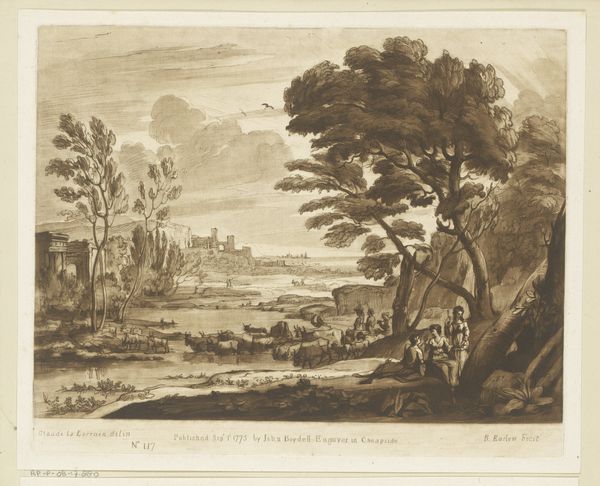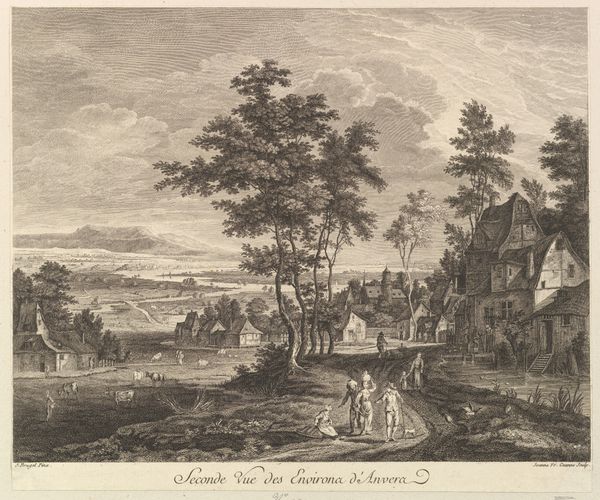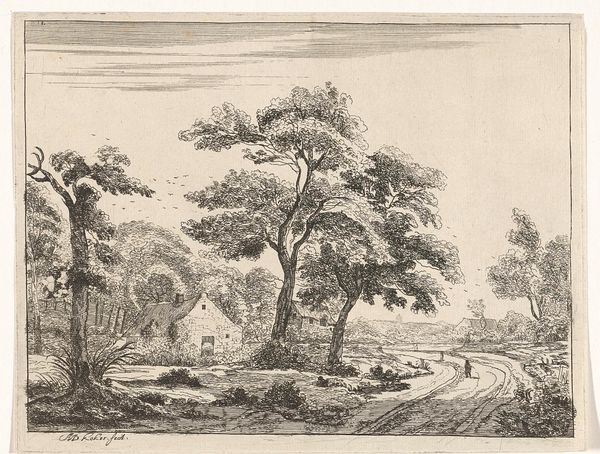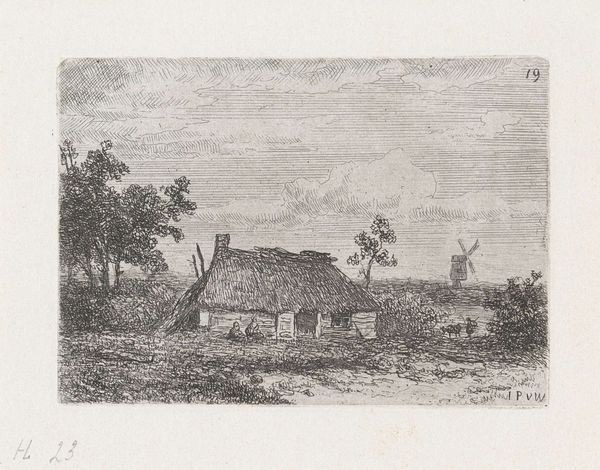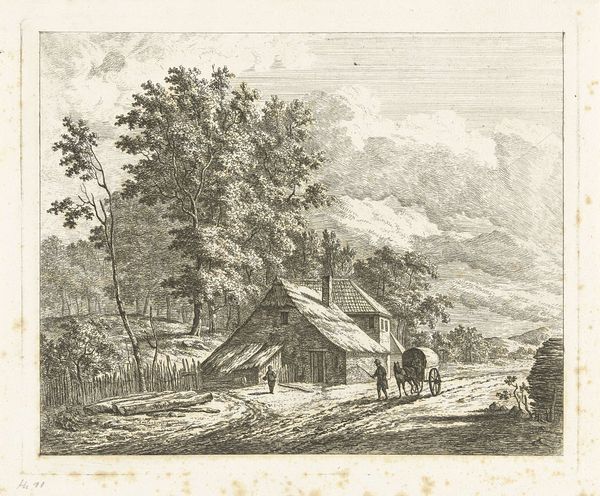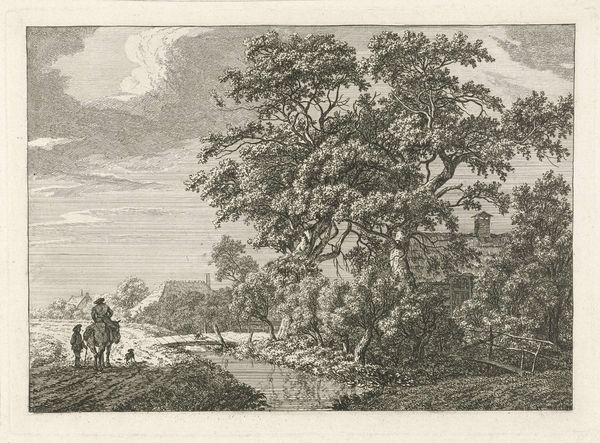
print, engraving
#
dutch-golden-age
# print
#
old engraving style
#
landscape
#
genre-painting
#
engraving
Dimensions: height 400 mm, width 520 mm
Copyright: Rijks Museum: Open Domain
Editor: This is "Schapenscheerders in een landschap: het seizoen zomer" (Sheep Shearers in a Landscape: the Summer Season) by Pieter Nolpe, created sometime between 1640 and 1706. It's a print, currently held at the Rijksmuseum. There’s a stillness and order to this piece, despite all the activity, what draws your eye? Curator: The entire composition feels deeply rooted in older bucolic traditions, doesn’t it? There is a feeling of harmony in nature with the symbols it presents. This piece reflects the enduring cultural memory of an idealized rural past. We can consider the act of sheep-shearing itself. What feelings does this image evoke in you? Editor: I think of simplicity, labour, a kind of pastoral purity. Curator: Exactly! Sheep themselves are often symbols of innocence and peace. This rural scene might represent a nostalgic view of labour being integrated in nature, with each animal and labourer providing a positive part to the landscape. This piece highlights the cultural value that places like farms play to common virtues, offering both physical sustenance and something spiritual to those living an increasingly metropolitan existance. Editor: That’s a fresh take. I didn’t consider how romanticized agricultural work was in that era. Curator: This kind of visual ideal is constantly recycled throughout art history, shaping how we perceive “authenticity” and simple labour. The symbols carry a powerful emotional weight. What about the role of weather in this landscape? Editor: You’re right, “summer” likely carries symbolic weight, too – notions of abundance, warmth, prosperity… Thank you! I’ll never look at idyllic landscapes the same way again! Curator: My pleasure! Seeing art through the lens of cultural memory lets us unlock its lasting resonance.
Comments
No comments
Be the first to comment and join the conversation on the ultimate creative platform.
